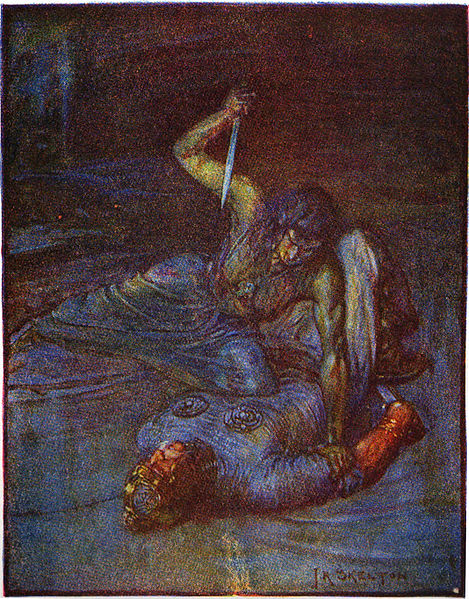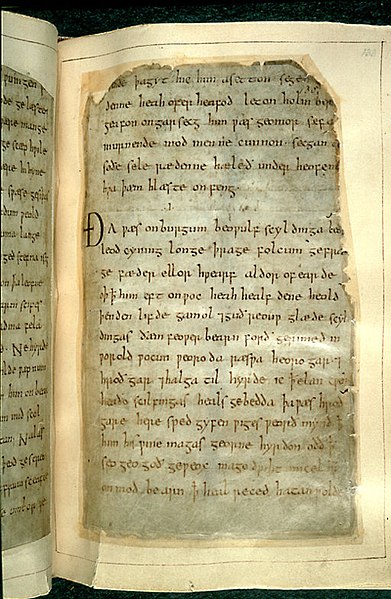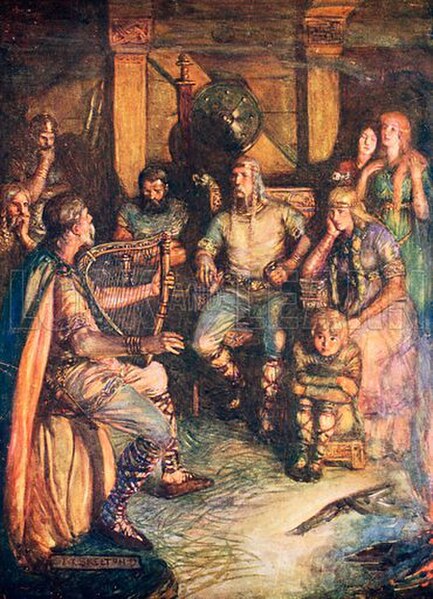Grendel's mother is one of three antagonists in the anonymous Old English poem Beowulf, the other two being Grendel and the dragon. Each antagonist reflects different negative aspects of both the hero Beowulf and the heroic society that the poem is set in. Grendel's mother is introduced in lines 1258b to 1259a as: "Grendles modor/ides, aglæcwif".
An illustration of Grendel's mother by J.R. Skelton from Stories of Beowulf (1908) described as a "water-witch" trying to stab Beowulf
The first page of the Beowulf manuscript
A sculpture of a valkyrie on a horse by Stephan Sinding, 1908
The Gefion Fountain in Copenhagen, Denmark by Anders Bundgård, 1908
Beowulf is an Old English epic poem in the tradition of Germanic heroic legend consisting of 3,182 alliterative lines. It is one of the most important and most often translated works of Old English literature. The date of composition is a matter of contention among scholars; the only certain dating is for the manuscript, which was produced between 975 and 1025 AD. Scholars call the anonymous author the "Beowulf poet".
The story is set in pagan Scandinavia in the 6th century. Beowulf, a hero of the Geats, comes to the aid of Hrothgar, the king of the Danes, whose mead hall Heorot has been under attack by the monster Grendel for twelve years. After Beowulf slays him, Grendel's mother takes revenge and is in turn defeated. Victorious, Beowulf goes home to Geatland and becomes king of the Geats. Fifty years later, Beowulf defeats a dragon, but is mortally wounded in the battle. After his death, his attendants cremate his body and erect a barrow on a headland in his memory.

First page of Beowulf in Cotton Vitellius A. xv. Beginning: HWÆT. WE GARDE / na in geardagum, þeodcyninga / þrym gefrunon... (Translation: What! [=Listen!] We of Spear-Da/nes, in days gone by, of kings / the glory have heard...)
Remounted page, British Library Cotton Vitellius A.XV
The traditional view is that Beowulf was composed for performance, chanted by a scop (left) to string accompaniment, but modern scholars have suggested its origin as a piece of written literature borrowed from oral traditions. Illustration by J. R. Skelton, c. 1910






